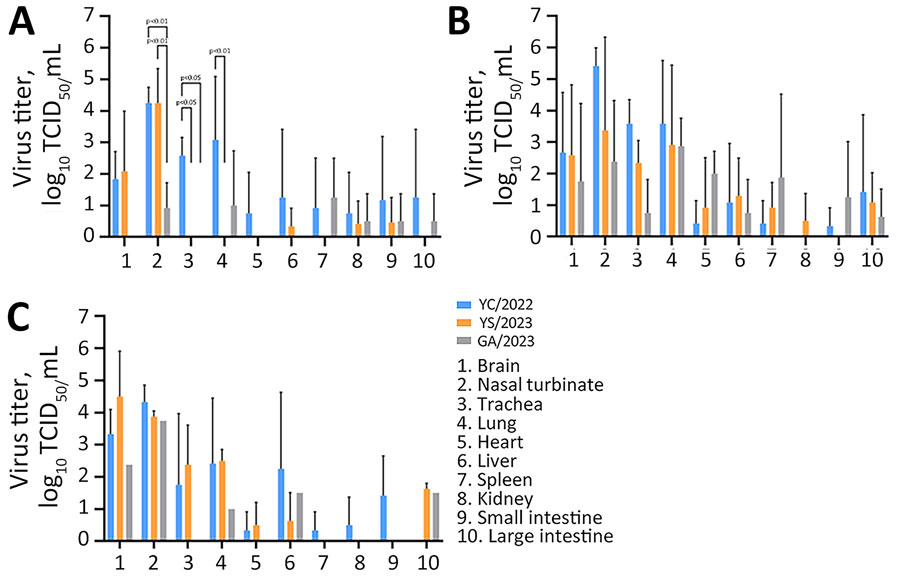Volume 30, Number 10—October 2024
Research
Pathogenicity of Highly Pathogenic Avian Influenza A(H5N1) Viruses Isolated from Cats in Mice and Ferrets, South Korea, 2023
Figure 4

Figure 4. Virus titers in organs of ferrets infected with highly pathogenic avian influenza A(H5N1) viruses isolated from cats in South Korea, 2023. Viruses were isolated from 1 duck (YC/2022) and 2 cats (YS/2023 and GA/2023). Ferrets (n = 9/virus) were inoculated with 1 mL of 103 50% median lethal dose of each virus, and 3 ferrets/day from each virus group were euthanized on days 3 (A), 5 (B), and 7 (C) postinfection to measure and compare virus titers in organ tissues. p values were calculated by using 2-way analysis of variance. GA/2023, A/feline/Korea/M305-7/2023; TCID50, 50% tissue culture infectious dose; YC/2022, A/duck/Korea/H493/2022; YS/2023, A/feline/Korea/M302-6/2023.
1These authors contributed equally to this article.
Page created: August 21, 2024
Page updated: September 23, 2024
Page reviewed: September 23, 2024
The conclusions, findings, and opinions expressed by authors contributing to this journal do not necessarily reflect the official position of the U.S. Department of Health and Human Services, the Public Health Service, the Centers for Disease Control and Prevention, or the authors' affiliated institutions. Use of trade names is for identification only and does not imply endorsement by any of the groups named above.